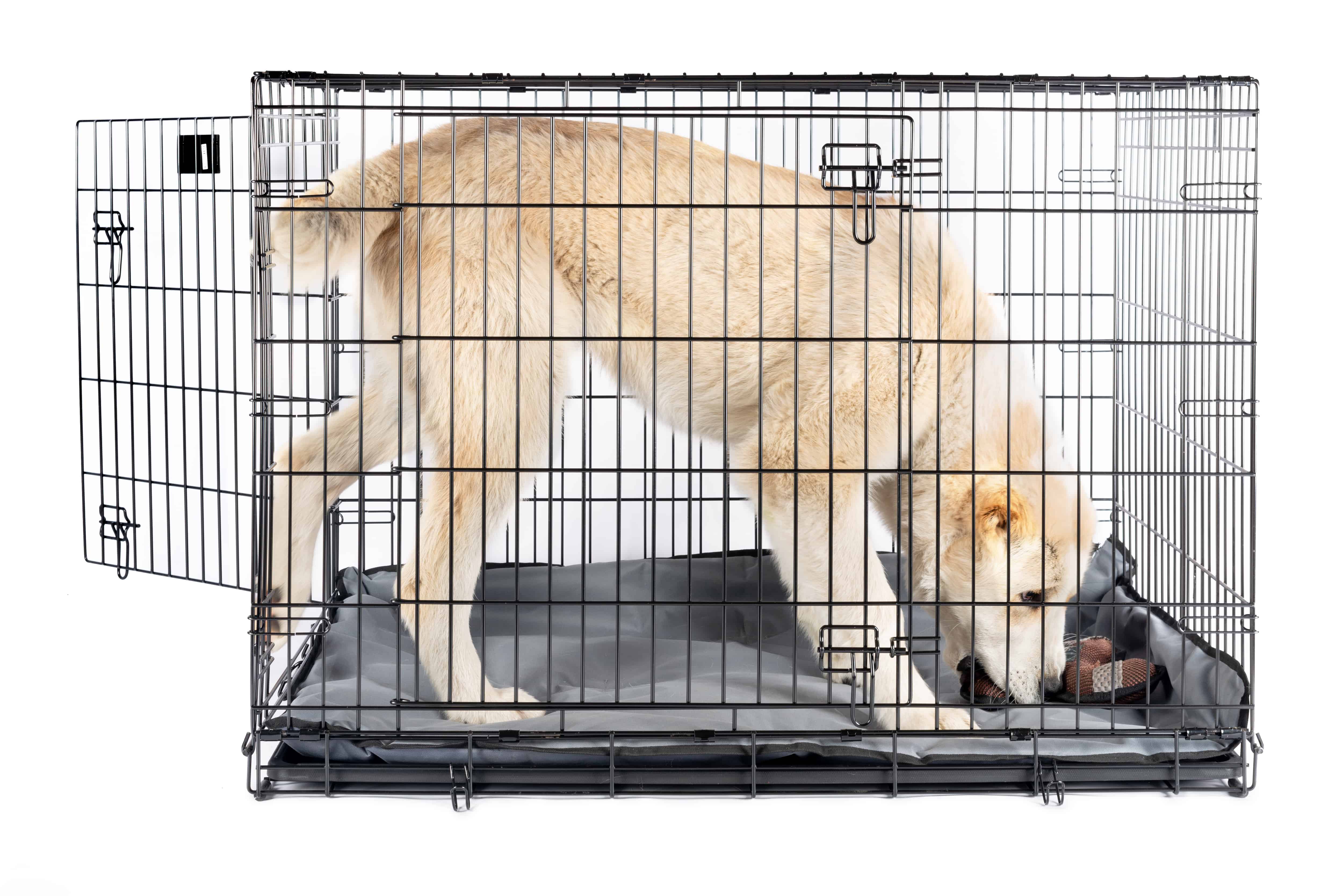Crate Training A New Goldendoodle Puppy In 6 Easy Steps
Crate training has a number of benefits for a growing dog, such as potty training and ensuring good behavior. Most people give up after a couple of days of trying, so we want to help make sure you overcome this challenge. Your new family members will see the crate as their own personal retreat. It seems funny at first that a puppy will consider a see-through crate as a private den or resting area, but as the months and years go by this will become the favorite place to retreat to when it gets too noisy or (heaven forbid) they have been a “bad dog”.
Never, ever use the crate as a punishment…Your puppy will equate being in trouble with being in the crate. After you provide positive reinforcement, your fur baby will use the crate as a safe place when they are anxious. It is a good idea to let it be their decision and not yours.
STEP 1: First Thing – Get the Right Dog Crate
Goldendoodles make great family dogs because they’re sociable and enjoy being around people. They don’t like being left by themselves a lot, so a see-through wire crate is your best option. A plastic crate will work as well, but some dog owners have reported aggressive chewing shortened the crate’s life.
Some Goldendoodles suffer from separation anxiety and will adjust better to being in a cage than a box. Goldendoodle puppies are very friendly dogs who love attention, but they can be shy at first. They do best with a quiet home environment where the owner is nearby and able to interact with them.
Goldendoodles come in all sizes so you will need to estimate your puppy’s adult size. You want something big enough for them to turn around in, but small enough to keep them feeling snug and secure. A too large crate might cause them to feel trapped. You can find crates online or at pet stores.
Step 2: Find the Right Location for the Crate
Make sure the crate has enough ventilation so that it doesn’t get too hot or too cold. Keep the crate out of direct sunlight. Place the crate in (or in view of ) a room that you spend a lot of time in so your dog doesn’t feel isolated or alone. Put down soft, comfortable bedding.
STEP 3: Introduce the Dog to Their New Home
Once you have the crate, take your dog inside and let them explore its new home. Let them sniff everything, play with toys, and even sleep in the crate. This is a positive experience and the best way to acquaint your new puppy with the “sometimes scary new box”.
Since you will be feeding your puppy 3 – 4 times a day (an adult dog usually twice a day), try serving these meals inside the crate. Start just outside the doorway and gradually move the food bowl further into the crate. This will help your puppy associate the crate with good things (food!!). A gravity-fed water bottle was perfect for my dog, as she kept spilling the water bowl. Now, on to the training…
STEP 4: Start Crate Training Process
Start by placing your dog in the crate for the first time and shutting the door, then wait about 10 minutes. After that, open the door and give your dog a treat. Repeat this process until your dog gets used to being in the crate. If you are planning to train your puppy to sleep in the crate overnight, prepare for very little sleep the first night. Older dogs will adapt to this change rather quickly, but a puppy is already dealing with too much time being away from family.
Step 5: Open or Remove the Crate Door
If your dog starts barking when you close the door, try leaving it slightly open. Eventually, you should be able to leave the door closed all the time. If not, you may need to use a different type of crate.
When your Goldendoodle has gotten used to its new environment, it’s time to let them be alone. Most puppies hate this, so expect lots of barking and whining.
If you want to get your dog used to being left alone for short periods, start by leaving him for just 5 to 10 minutes at first. If your puppy barks and makes a fuss, it’s okay, just don’t go back into the room right away. Your dog will start to learn that barking will not get him/her out but that you will be back soon. After the proper time is up, a treat and a potty break are in order. This is the best thing to help with creating a positive association with being in the crate waiting for the parents to return.
STEP 6: Allow Your Dog Outside
Once your dog has learned to stay in the crate for a specific period of time, let him/her out, making sure they get some stretching and exercise time. The training session should include food rewards (a Goldendoodle’s favorite!) and potty breaks.
If you are training your dog to be a service animal, or if you have an emotional support animal, it is important that he/she learns how to use their special safe space to calm down when upset. This will help them learn how to cope with anxiety and stress.
How Long Can You Leave A Puppy In A Crate?
Most new owners of Goldendoodle puppies don’t know how long the puppy can hold its bladder. It depends on factors including how old the puppy is, how long he or she has been living with you, and your consistency when training him or her. Young puppies have small bladder sizes and, of course, they cannot hold it for long.
One good rule of thumb is the puppy’s age in months is equal to the number of hours he or she can hold it in the daytime. For example, if a puppy is two months old (8 weeks of age)it should be able to hold it for two hours. By the time your puppy is six months old, he or she should be able to hold it for at least six hours. Most puppies can hold their urine for 1.5 times as long at night as they did during the day.
Check out our article on potty training your Goldendoodle.


